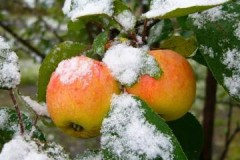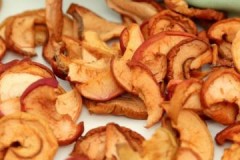Why and how apples are processed for long-term storage?
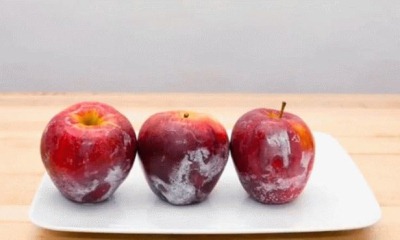 A rich harvest of apples is a reason to think about how to store and how to process sweet fruits so that they delight with taste, appearance and nutritional properties for as long as possible.
A rich harvest of apples is a reason to think about how to store and how to process sweet fruits so that they delight with taste, appearance and nutritional properties for as long as possible.
And for those who buy fruits in a store, information about how mass producers process apples for long-term storage will help to make the right choice of sweet fruits that are safe for health.
Content
Methods and means of processing
There are a number of processing methods available to preserve apples from harvest to spring.
Wax
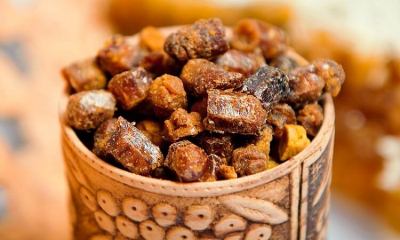 Waxing will help to extend the shelf life as much as possible.
Waxing will help to extend the shelf life as much as possible.
Algorithm of actions:
- In a clean container, mix 1 liter of ethyl alcohol and 200 gr. purified propolis.
- Sorted apples (one at a time) are dipped into a warm solution.
- The fruits are laid out on paper in one layer and left to dry.
Waxed fruits retain their nutritional and flavor properties for eight to ten months. Before eating, apples must be thoroughly brushed under hot water.
Glycerol
Glycerin treatment perfectly protects apples from premature decay.
Algorithm of actions:
- select clean, ripe fruits without visible signs of spoilage;
- each apple is gently wiped with a soft cloth abundantly dipped in glycerin;
- it is important not to make sudden movements so as not to damage the delicate peel of the sweet fruit.
A solution of paraffin and stearin in ethyl alcohol
The maximum long-term storage is provided by treatment with paraffin or stearin on ethyl alcohol (from eight to ten months).
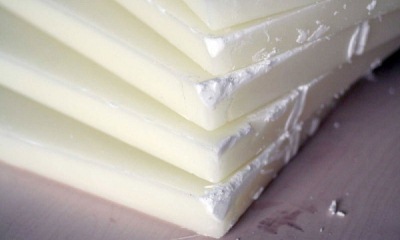 Algorithm of actions:
Algorithm of actions:
- Paraffin or stearin is dissolved in alcohol.
- Sorted apples are immersed in the resulting liquid one at a time, and then left on the table to dry.
- When the paraffin has hardened, the fruit can be placed in boxes for storage.
Paraffin does not cause allergies, but before eating apples should be doused with boiling water to get rid of the dense, protective layer.
Calcium chloride and potassium permanganate
Saturation of the fruit with a calcium chloride solution will help to increase the shelf life.
Algorithm of actions:
- 400 g of calcium chloride is dissolved in 10 liters of water;
- sorted apples in bulk or in a net are immersed in a solution for 30-60 seconds;
- the processed fruits are laid out in one layer to dry.
An alternative to calcium chloride can be a solution of potassium permanganate (in a simple way of potassium permanganate).
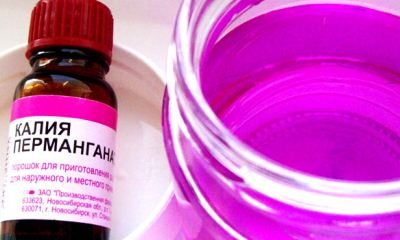 Algorithm of actions:
Algorithm of actions:
- 5 g of potassium permanganate are dissolved in 10 liters of pure water.
- The resulting liquid is sprayed with sorted apples from all sides.
- After the peel has dried, the fruit is sent for storage.
After treatment with calcium chloride or potassium permanganate, apples retain their taste, juiciness and skin color for four to six months. Rinse the fruit thoroughly under running water before eating.
Denefil
Treatment with denephil helps to keep the fruit from being damaged by bacteria, mold and yeast, significantly increasing the shelf life.
Algorithm of actions:
- sorted apples are laid out on a horizontal surface in one layer;
- by spraying, the fruits are covered with denephil.
Denefil is a product of oil refining, carbon slowing down the decay processes It is a very strong carcinogen that can provoke severe allergic reactions. Denephil accumulating in the body can cause the development of oncopathologies.
It will not work just to wash off denephil from sweet fruits. Alkaline soap and hot water will help neutralize the negative effects of denefil on the body. Ideally, peel off glossy rind with a knife.
What is the best way to process at home?
For home processing, it is best to use:
-
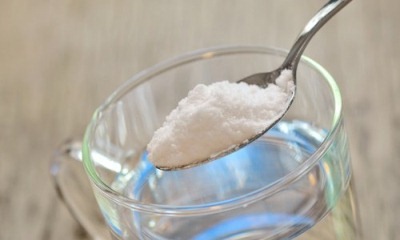 Bathing in baking soda solution... To prepare the solution, 500 g of dry soda powder is dissolved in 10 liters of pure water. Sorted apples are immersed in the resulting product and kept for five to ten minutes.
Bathing in baking soda solution... To prepare the solution, 500 g of dry soda powder is dissolved in 10 liters of pure water. Sorted apples are immersed in the resulting product and kept for five to ten minutes.After the fruit is taken out, laid out on the table to dry, and already dry packed in boxes for further storage.
- Processing with potato starch solution... In order to keep apples from rotting for a long time, each fruit is dipped in a solution of potato starch (2 tsp of starch, 8 drops of iodine and 2 g of salt are diluted in 250 ml of water).
After processing, the apples must be dried. The thinnest film that appears after drying on the peel of the potato solution will protect the sweet fruit from spoilage for a long time.
- Propolis alcohol solution... For its preparation, propolis grated on a coarse grater is mixed with alcohol (proportion 1: 5). Sorted apples are dropped into the resulting mixture. Natural wax envelops the fruit, protecting it from premature spoilage.
- UV treatment... Everything is very simple: apples are laid out in one layer on a horizontal surface, then they are treated with a bactericidal ultraviolet lamp at a distance of a meter. Processing lasts at least half an hour.
During the process, the fruits must be rotated so that the UV treatment is uniform. As practice shows, this method helps to keep apples fresh throughout the winter.
- Carbon dioxide treatment... The pre-sorted fruits are placed in a bag, where, using a siphon, carbon dioxide is slowly injected. After processing, the package must be carefully closed. In a bag of carbon dioxide, sweet fruits keep fresh for up to five months.
How to wash off the coating before eating?
Apples from your own garden just need to be washed with a brush under hot water before eating.For fruit from the store, a different cleaning method is used to remove the top protective layer.
Algorithm of actions:
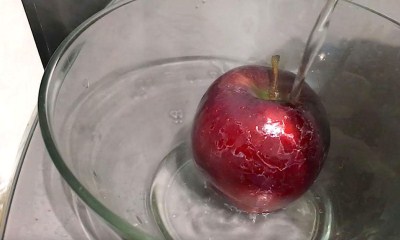 The apples are placed in a deep bowl and covered with hot water. In this form, the fruit should stand for at least five minutes. Similar actions get rid of thin wax deposits.
The apples are placed in a deep bowl and covered with hot water. In this form, the fruit should stand for at least five minutes. Similar actions get rid of thin wax deposits.- Additionally, the fruit is covered with a mixture of lemon juice and soda (1: 1 ratio) and poured with water. After ten minutes, each apple is rubbed with a soft brush or sponge.
If you are not sure that the manipulations done will qualitatively clean the fruit from processing, the peel must be cut off with a sharp knife.
Alternative
Preserve the taste and nutritional value of apples at home without processing it is possible, subject to certain rules:
- For long-term storage, only winter varieties of apples... The fruits should be ripe, with a firm skin, without signs of rotting.
- Long-term storage at home is possible only in a room that maintains a temperature of + 1-5C, humidity from 85%. For private houses, such a room can be a basement or a garage, in an apartment building - an insulated loggia.
- Wrapping each fruit in paper, sprinkling it with sawdust, shavings, sand or packing in a plastic bag (fruits are packed in no more than 2 kg each, holes for ventilation are made in the walls of the bag) will help to save apples without processing.
Advice
It is important to adhere to the following tips:
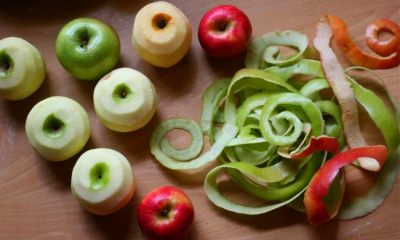 A knife will help to determine that the fruit is treated with paraffin. It is enough to gently scrape the peel with a knife and thin white shavings will appear under the blade.
A knife will help to determine that the fruit is treated with paraffin. It is enough to gently scrape the peel with a knife and thin white shavings will appear under the blade.- Waxed paper or an oiled napkin is ideal for long-term protection from rotting apples.
- Wax is the best option for processing fruits with very thin skin and sweet, juicy pulp.
- When offering an apple to a child, it is better to peel off the peel with a knife.
- Buying seasonal apples from a domestic manufacturer significantly reduces the risks of allergic reactions provoked by chemical processing of fruits.
- A quick way to protect apples from spoilage is to treat them with ready-made preparations of biofungicides.
Useful information on storing apples is provided in this section.
Conclusion
Using in practice any of the described methods of processing apples for long-term storage, you can enjoy tasty and ripe fruits for as long as possible.

